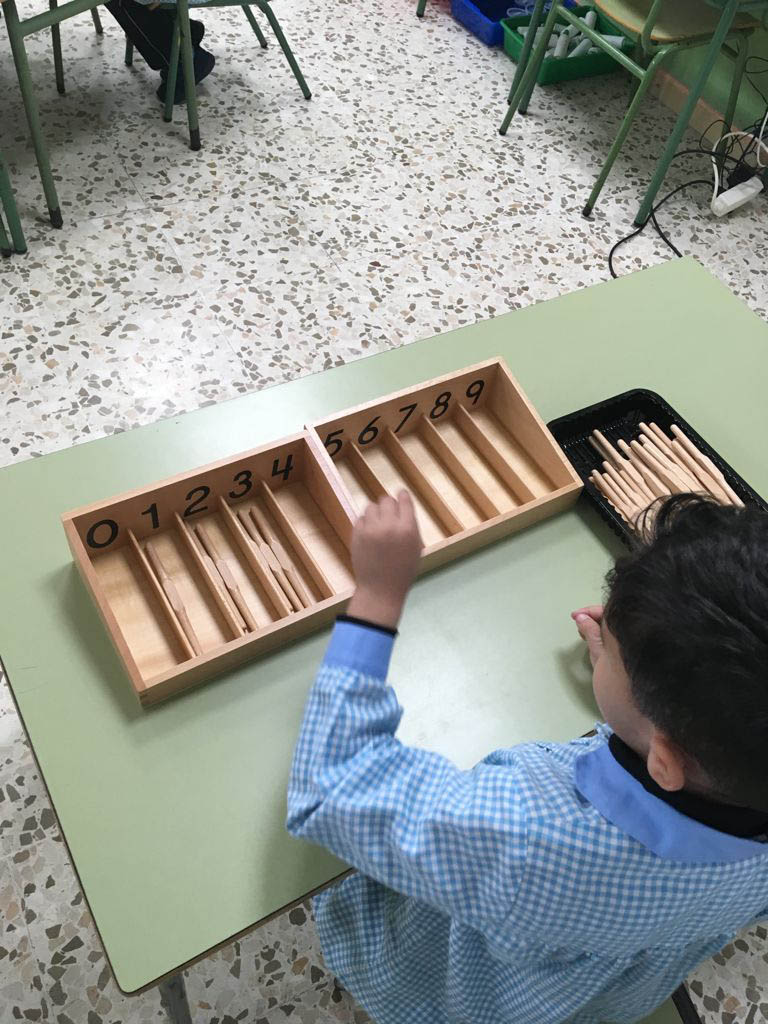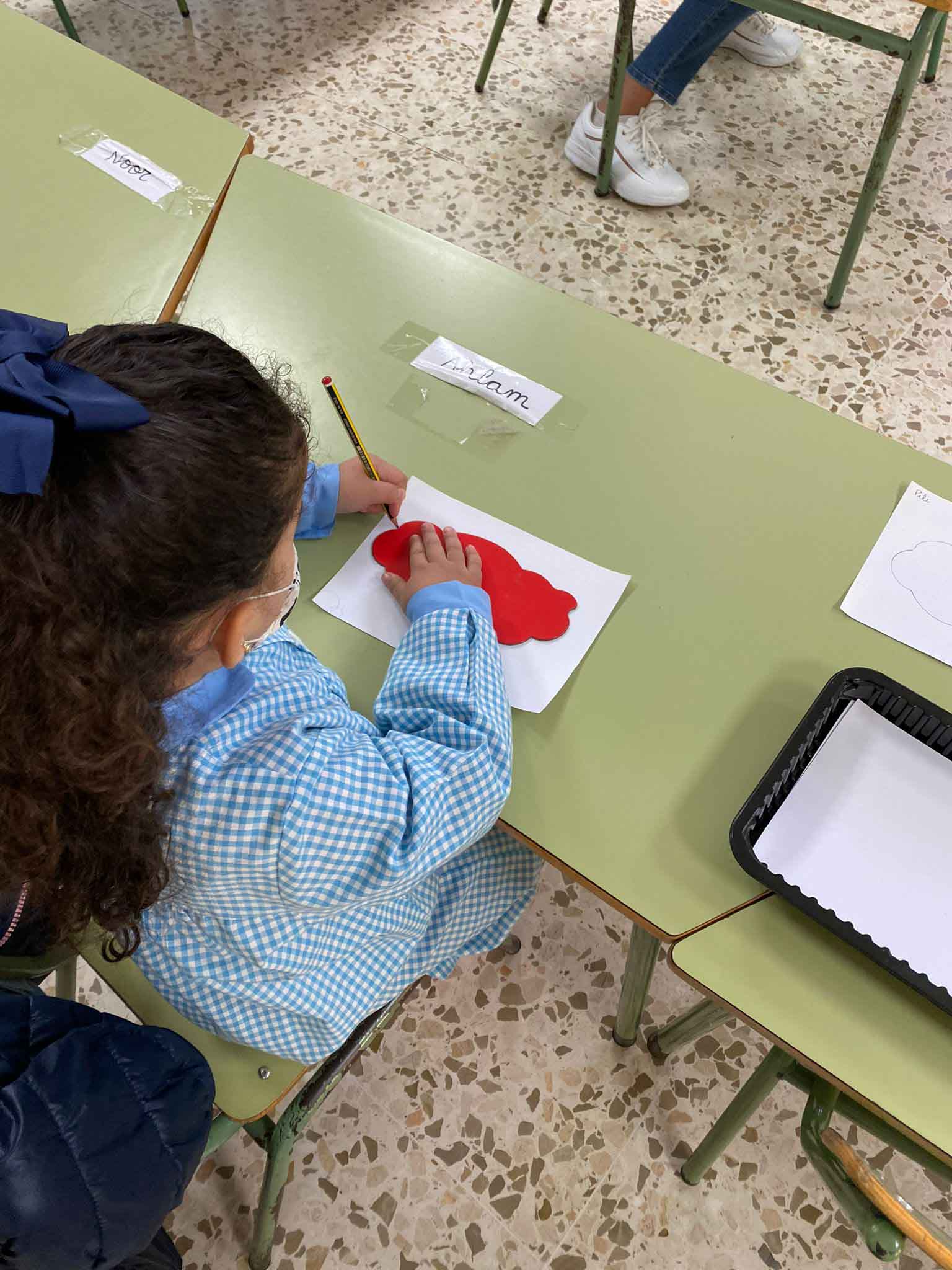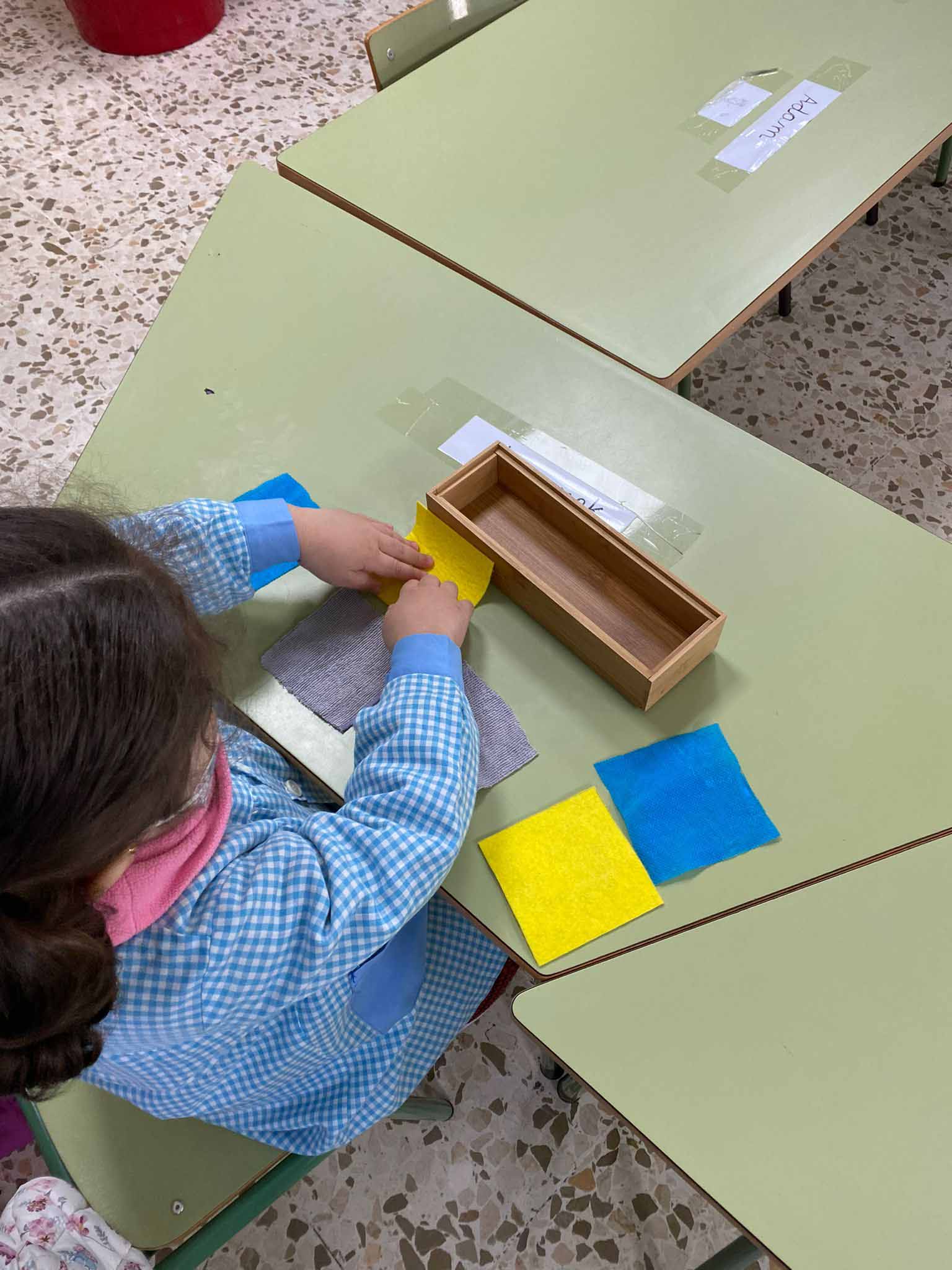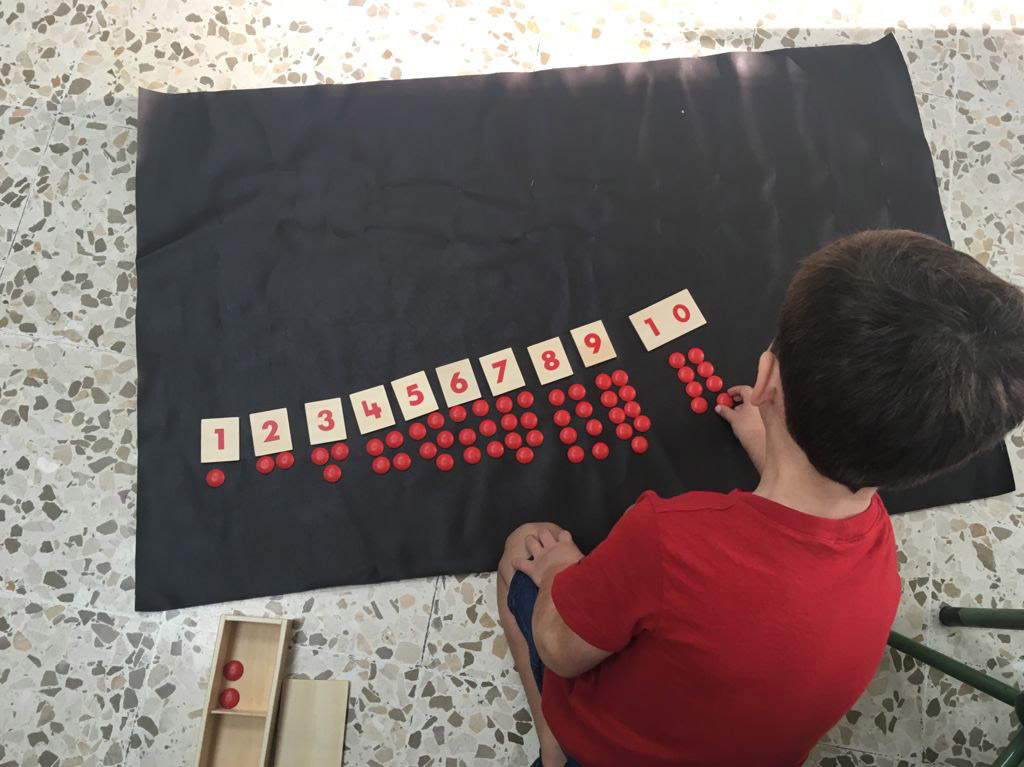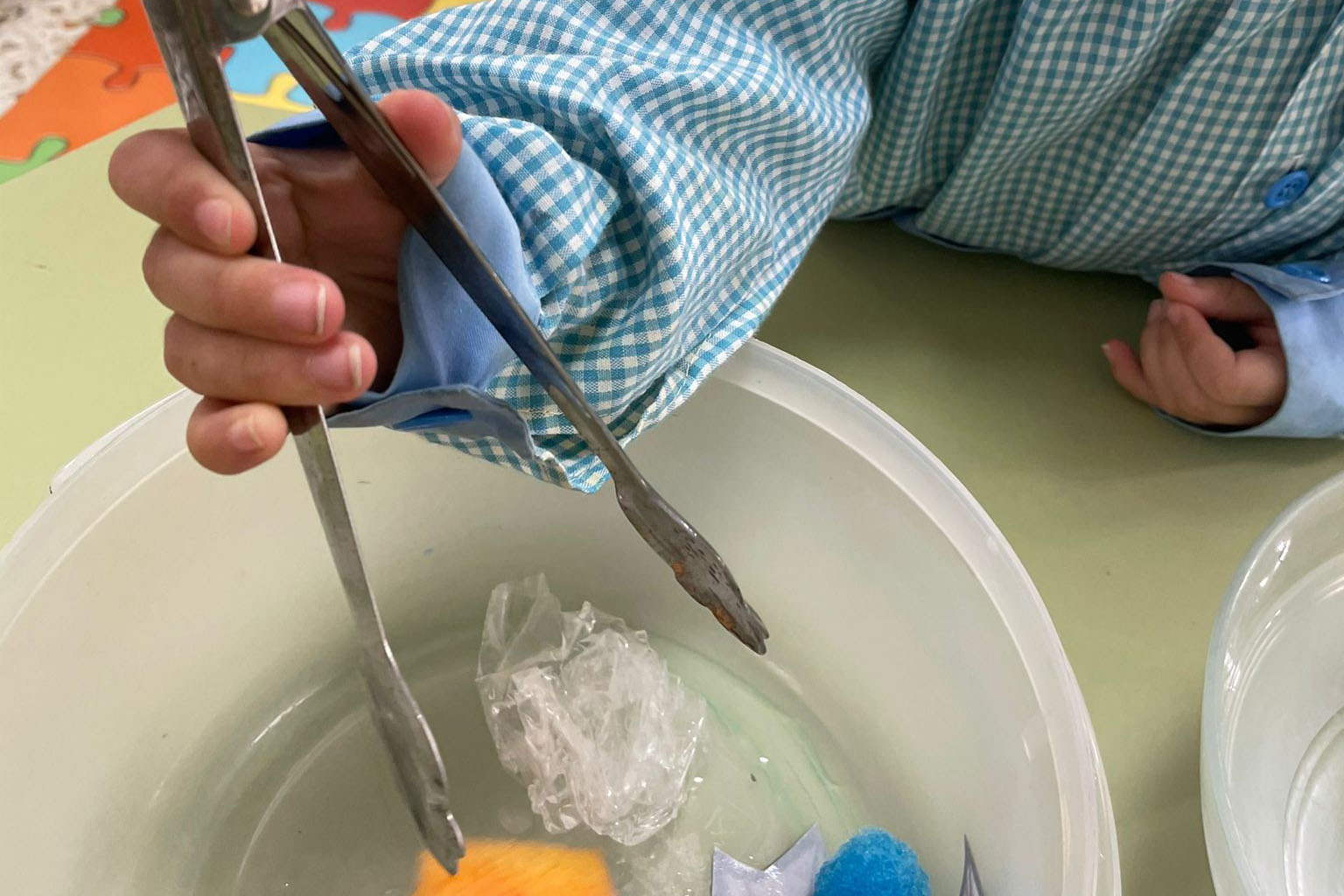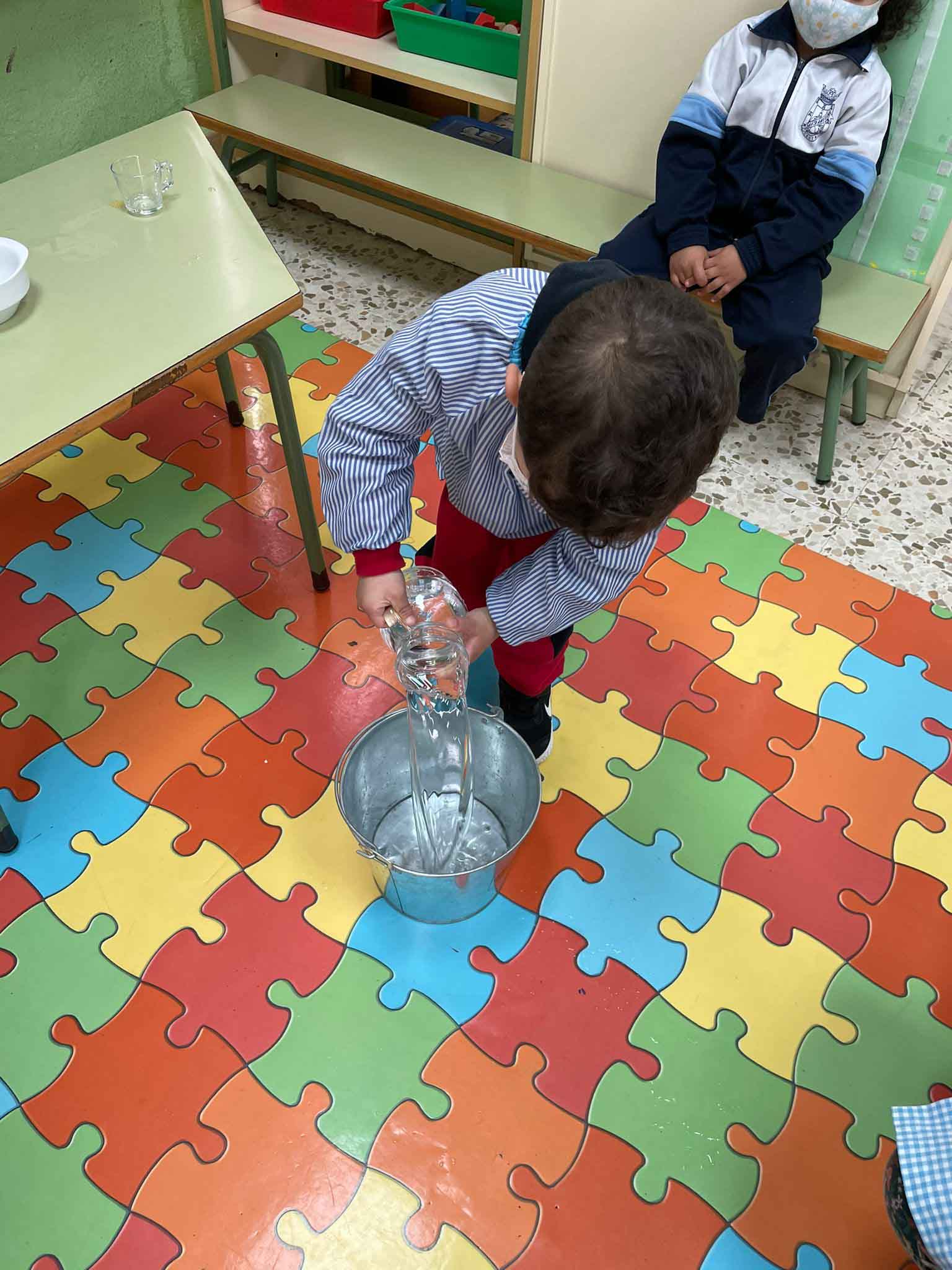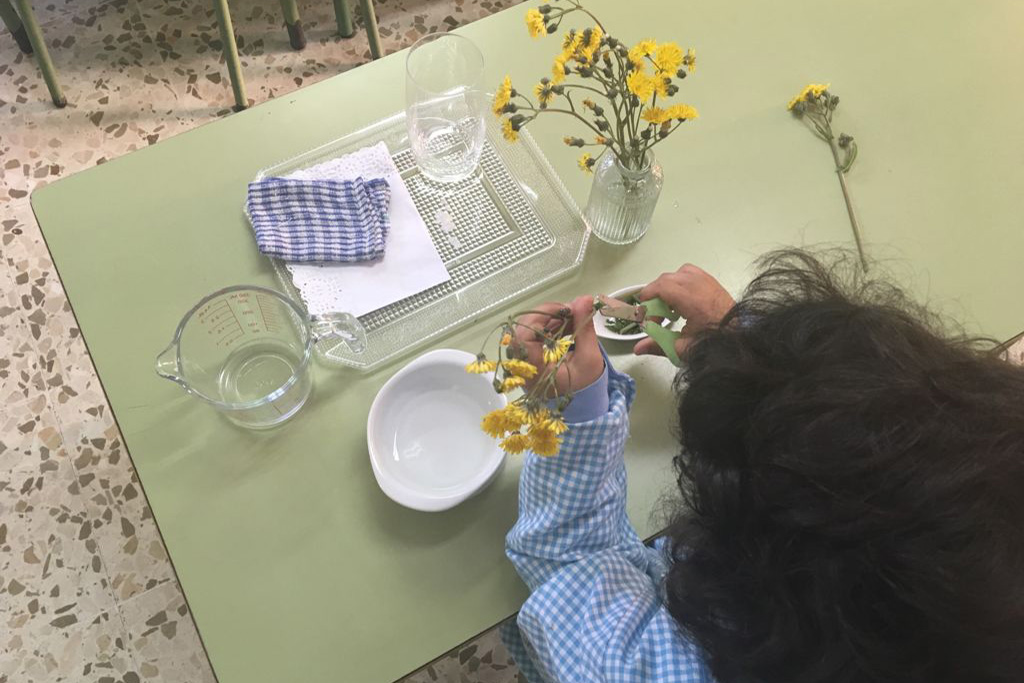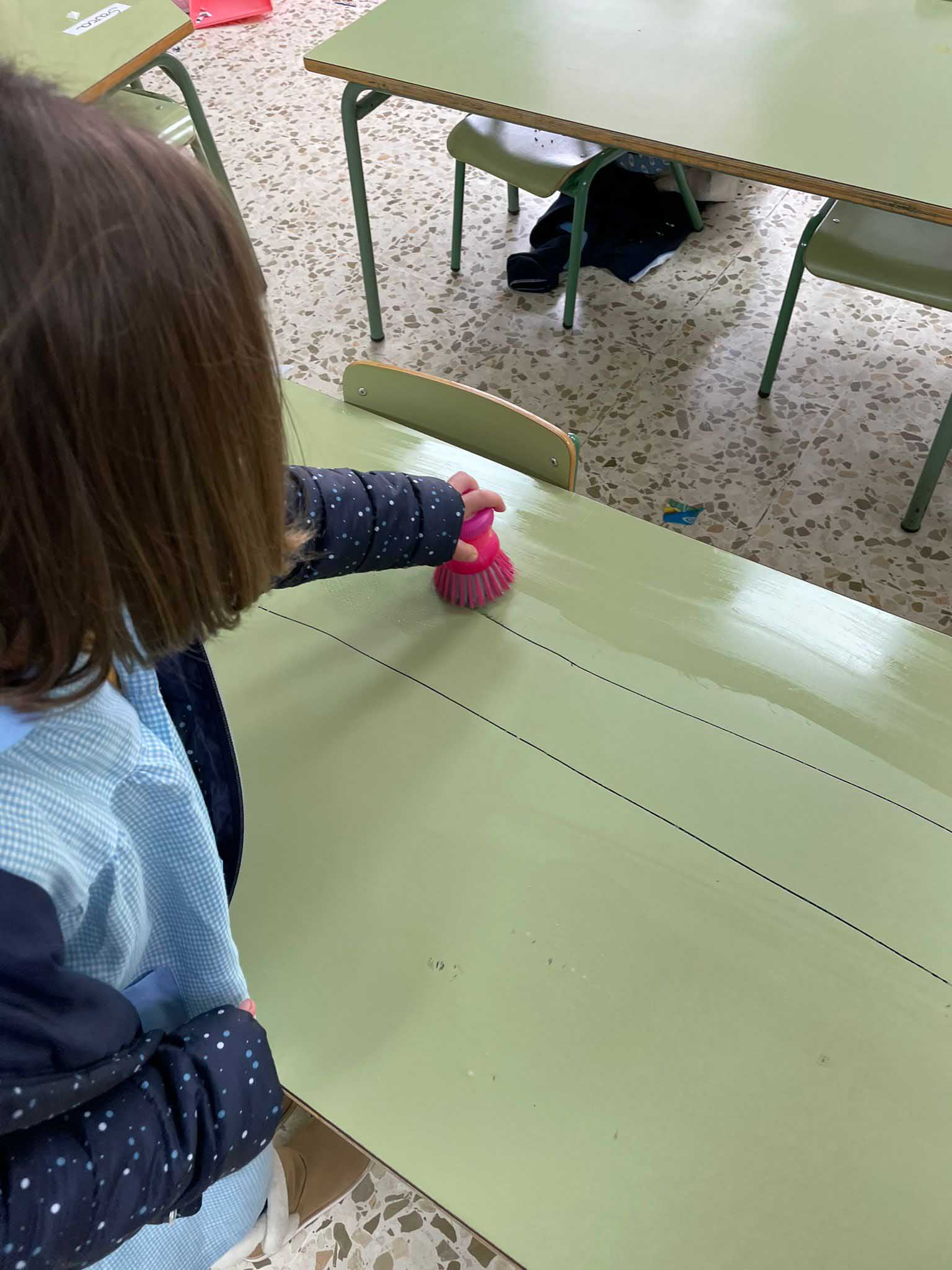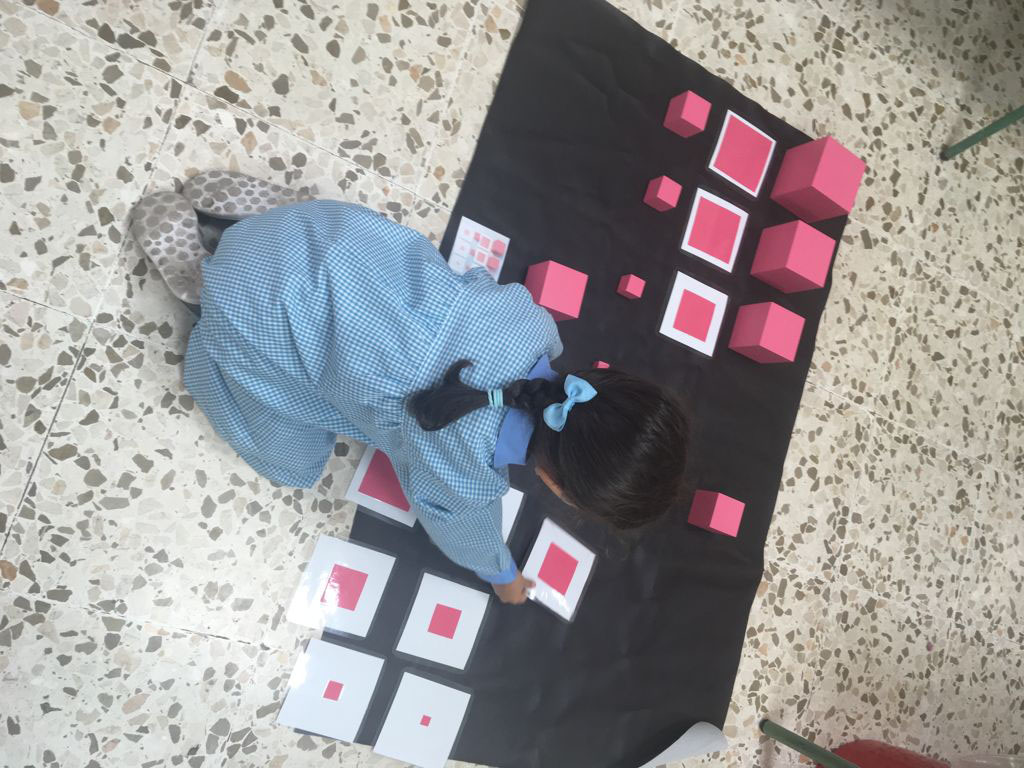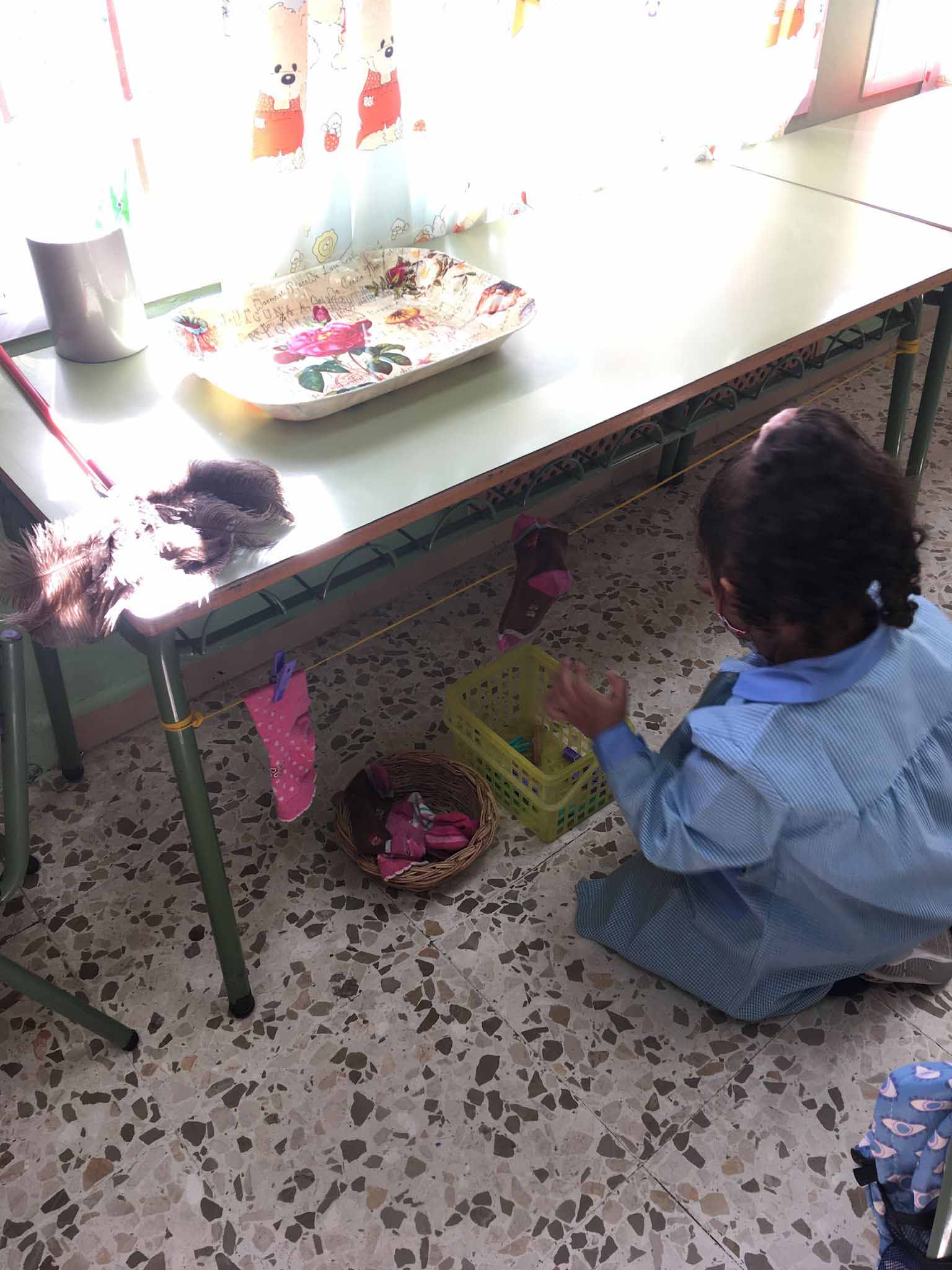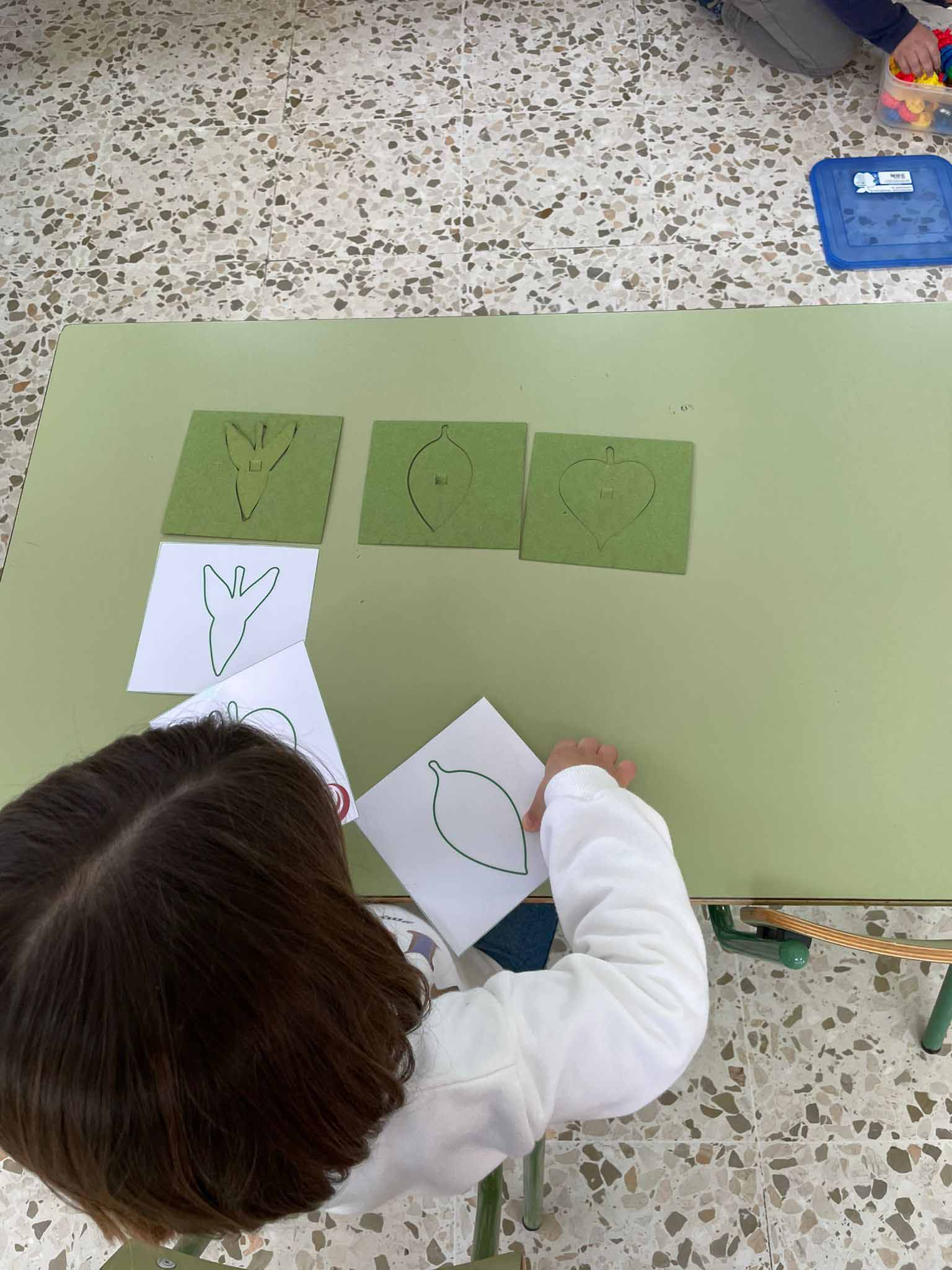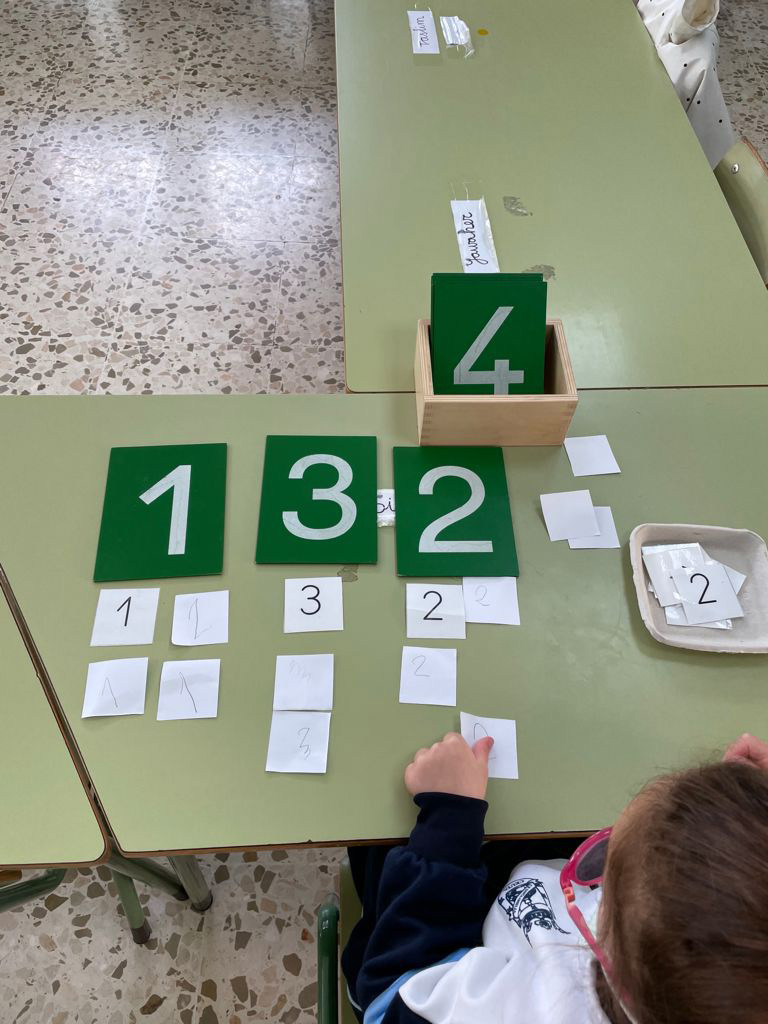The Montessori Method: Educating Children for a Lifetime of Learning and Happiness - The Objective Standard
One of the most important issues in life for anyone who has or is planning to have a child is the matter of his education. And the first stage of (formal) education with which parents need to be concerned is preschool through lower elementary. What is the best approach to education for children in this age range? What approach is consistent with the facts of reality, the requirements of the child’s developing mind, and his need of self-esteem? The answer, in three words, is: The Montessori Method.
Maria Montessori (1870–1952), the first woman physician in Italy, began her career as an educator in 1898, teaching mentally retarded children in Rome. According to a biographer, “Such indeed was her success that a number of idiot children from the asylums learned to read and write so well that they were able to present themselves with success at a public examination taken together with normal children.”1 Dr. Montessori wrote about this early success: “While everyone was admiring the progress of my idiots, I was searching for the reasons which could keep the happy, healthy children of the common schools on so low a plane that they could be equaled in tests of intelligence by my unfortunate pupils!”2
For the next several years, she conducted research in public schools and studied educational theories and psychology toward discovering how to apply her educational methods to normal children. In 1907, she had the opportunity to put her ideas into practice with three- to six-year-olds in a housing project in the slums of Rome. These children, Dr. Montessori recalled, were “abandoned [during the day] by their fathers and mothers as they went out in search for work.”3 The children came to the Casa dei Bambini (Children’s House) “tearful, frightened . . . so shy that it was impossible to get them to speak”4—and yet, under Dr. Montessori’s guidance, by age four or five they were reading and writing, washing and dressing themselves, brushing their hair, scrubbing their worktables, watering the plants, and interacting happily and politely with each other and with adults. They had become curious about the world around them, perceptive of the many wondrous things in it, and passionate about learning. Montessori’s success astounded the public and led to a rapid, worldwide interest in her methods. During the fifty years that followed, Montessori refined her approach and trained teachers in her educational method.
Today, there are more than four thousand Montessori schools in the United States and more than seven thousand worldwide.5 Children who begin attending a Montessori school at age two-and-a-half or three typically learn to read and write by the time they are five. By second or third grade (i.e., seven or eight years old), they read full chapter books; pen creative multipage stories in neat cursive with few spelling errors; have a foundation in grammar; display mastery of the four basic operations of arithmetic with numbers as large as a million; have a thorough understanding of fractions and decimals, and substantial understanding of geometry. By the end of third grade they have developed skills that many American students do not develop by eighth grade, if ever.
Most remarkable, however, is not that Montessori students acquire such academic skills, but how they acquire them. Montessori children do not sit at desks while teachers instruct them on the facts and ways of the world; rather, they choose their own activities from a range of developmentally appropriate options and work independently.
A typical Montessori classroom is a large, open space, broken up by low shelves on which are displayed a variety of educational materials or “works” from which a child can choose freely (once he has been shown how to use them properly). For example, a primary classroom, for ages three to six, comprises four areas, each containing a different type of material. One area, dedicated to Practical Life Exercises, includes little pitchers with which to practice pouring; shoes to lace and polish; and tongs with which to pick up small items, such as beans or little pearls, and transfer them between containers (this trains, among other things, the child’s hand coordination). Another area, dedicated to Sensorial Exercises, which help a child to isolate percepts and thus sharpen his faculty of perception, includes graded color tablets to pair and arrange by shade; rods of differing lengths to sort; small glass jars to pair based on the scent of their contents; and small wooden cylinders called “sound boxes” to group according to the sound they make when shaken. The other two areas contain materials related to language and to mathematics. Cultural and scientific subjects, such as history, geography, botany, and zoology, are integrated into the four areas where appropriate.
During extended, uninterrupted work periods, which last two to three hours and form the core of the Montessori school day, children choose their works from the shelves and carry them to a work space they select—either a small mat that the child gets from a storage space and rolls out on the floor, or a small wooden table with stools. Each child works independently (or, occasionally, with one or two freely chosen partners) with the material for as long as he is interested. Once he has completed his work or lost interest, he returns it to its proper location and is free to begin another work—or take a brief break, walk around the room, watch his companions work, think about what to do next, or help himself to a snack at a station integrated into the Practical Life area.
In short, the Montessori classroom is designed and organized so that the students largely decide for themselves what they will do and when they will do it. Let us now consider why.
Developing an Active Mind and Concentration Skills
Fundamentally, what sets Montessori education apart from other educational philosophies is a deep respect for the child’s reasoning mind and his need to develop the habit of focusing and concentrating it for sustained periods of time.*
Dr. Montessori held that “the most significant thing about the child’s development—that which dominates and gives it its special form—is not [the] instinctive tendencies which we have in common with the animals, but that capacity to reason which distinguishes us from them.”6 She recognized that human beings are born with a capacity to reason, and that a child needs to develop this distinctive faculty by his own effort. The school’s proper role, she insisted, is to provide an environment in which the child is most able to do so—and the child’s proper work “is to create the man he will become . . . to perfect himself.”7 Thus Montessori schools focus not on teaching in the sense of an adult-led process of transmitting knowledge, but rather on establishing and maintaining a specially prepared environment in which the child can and will teach himself.
Toward this end, Dr. Montessori designed and tested various materials over many years, and she retained or discarded them based on the reactions that children in her schools had to them. She observed that the materials the children would choose freely and work with for extended periods enabled them to teach themselves some important skill or item of knowledge.
Dr. Montessori wrote of an episode from her early work that illustrates the sustained concentration that children can develop by means of such materials:
I happened to notice a little girl of about three years old deeply absorbed in a set of solid insets, removing the wooden cylinders from their respective holes and replacing them. The expression on the child’s face was one of such concentrated attention that it seemed to me an extraordinary manifestation; up to this time none of the children had ever shown such fixity of interest in an object; and my belief in the characteristic instability of attention in young children, who flit incessantly from one thing to another, made me peculiarly alive to the phenomenon.
I watched the child intently without disturbing her at first, and began to count how many times she repeated the exercise; then, seeing that she was continuing for a long time, I picked up the little armchair in which she was seated, and placed chair and child upon the table; the little creature hastily caught up her case of insets, laid it across the arms of her chair and gathering the cylinders into her lap, set to work again. Then I called upon all the children to sing; they sang, but the little girl continued undisturbed, repeating her exercise even after the short song had come to an end. I counted forty-four repetitions; when at last she ceased, it was quite independently of any surrounding stimuli which might have distracted her, and she looked round with a satisfied air, almost as if awaking from a refreshing nap.
I think my never-to-be-forgotten impression was that experienced by one who has made a discovery.8
Dr. Montessori saw that for a child to develop the skill of concentrating for an extended period of time, he must be interested in the material with which he is working. She understood that an educator cannot force a child to think, but can only create an environment highly conducive to thinking—an environment in which the materials fascinate the child and thus elicit his concentration. And she saw that the materials that serve this purpose are those that lend themselves to activity and repetition.
Right from the beginning . . . this phenomenon of concentration has been our guide in building up our method. Our experience has proved, beyond doubt, that concentration comes when children are occupied with the material, always with the material—never without a material. . . . So then it is a material we must have, not a person. And the condition to ensure concentration is as follows: The material must be an object which does not interest in an abstract manner, but because it lends itself to a certain activity, which is such that the child is led to repeat the movement again and again from the beginning.9
Children who first come to Montessori schools are typically not able to sustain concentration for long. In fact, a “certain initial disorder” is normal at the beginning of a school year or when a new school is established. A teacher who opened a Montessori school describes the scene:
They (the children) at first snatched the objects out of each other’s hands; if I tried to show an object to any particular pupil, the others dropped what they themselves were holding and gathered aimlessly and noisily round us. . . . The children showed no interest in the material: they passed from one object to another without persevering in the use of any.10
In other words, they behaved as typical three- or four-year-olds. So how does the teacher—or, in Montessori terminology, the directress—bring order to this chaos?
According to Dr. Montessori, a directress has three roles with respect to her students. E. M. Standing, who collaborated with Dr. Montessori for thirty years and, at her request, wrote a systematic presentation of her principles and practices, explains that the directress must first
see that the environment is always kept in order, down to the smallest detail—always beautiful and shining and in perfect condition. . . .
The directress should remember that, in a sense, she herself is also a part of the environment—the most living part of it, too. This means that she should always make herself attractive and pleasing to the children by being tidy, well dressed, serene, careful and full of quiet dignity. This care should precede all others. “If the environment be neglected, the furniture all covered with dust, the materials muddled and in disorder; and above all if the directress is slovenly and negligée with the children—then all the essential foundation of her work would be missing.”11
Her second and most fundamental role, which begins when the children enter the classroom, is to guide the children out of their “inner chaos” and to help them become engaged with the materials in the classroom—to create a “point of contact” between child and activity. Initially, the directress calls upon traditional teaching skills, such as using songs, drama, and her personal passions to get the new children interested in any simple activity, typically from the Practical Life area. Over time, as the children learn to concentrate, her choice and delivery of lessons changes.
By carefully observing her students, the directress identifies the most suitable material to introduce to each child and the best time at which to introduce it. She chooses an activity that is at the right level of difficulty for a particular child, something that presents a challenge but is within the range of his abilities. She then invites the child, sometimes along with a small group of other children, to join her in a demonstration. (He is free to decline.) The presentation itself is focused on introducing a material as simply and with as few words as possible. Montessori believed that if the material chosen served an inner need of the child, and was presented to him in a kind and respectful way, he would become engaged with it. “The lesson is a call to attention. If the object meets the inner needs of the child and is something that will satisfy them, it rouses the child to prolonged activity. He masters it and uses it over and over again.”12
The directress’s third role is that of not interfering with the child’s activities:
When the child becomes interested in an object, the teacher must not interrupt, because this activity obeys natural laws and has a cycle; and if it is touched, it disappears like a soap bubble and all its beauty with it. The teacher must be very careful now, non-interference means non-interference, in any form. Often mistakes are made by teachers here. . . . [I]f a child has a difficulty and the teacher interferes to show how to deal with it, the child will leave the teacher with the work and go away. The interest of the child is not the mere task, but conquering that difficulty. If the teacher is going to conquer it instead, well let her, my interest is done. . . . The great principle which leads to the success of the teacher is this: as soon as concentration appears, pay no attention, as if the child does not exist.13
Importantly, this principle of noninterference applies only to children who are engaging in a useful activity. Noninterference does not mean that “anything goes.” Dr. Montessori emphasizes that the teacher “need have no qualms whatever about disturbing the child if he is not doing anything in particular; whilst if he is disturbing his neighbours it is her duty to intervene at once.”14 In a Montessori classroom, freedom means freedom within limits, and the quality of the classroom stands or falls with the teacher’s ability to put these principles into practice. A teacher’s most challenging task is establishing and maintaining a classroom in which all children work independently, busily, and quietly. The height of a teacher’s success, wrote Dr. Montessori, is “to be able to say: ‘Now the children work as if I did not exist.’”15
A key reason why the children are able to work as if the teacher did not exist is that the materials enable the children to identify errors on their own and to correct themselves. For instance, one of the first works introduced to children of two-and-a-half to three years of age is a set of four oblong blocks of natural colored wood. Each block contains ten cylinder-shaped insets (with knobs on top) that can be removed and reinserted by the child. The cylinders vary in height and width. In one block, only the width changes; in another, the height; in the third, both increase together; and in the fourth, the height decreases as the width increases. A child works with these materials by removing the cylinders, mixing them up, and replacing them in the proper holes. If he makes a mistake, for example, by placing a thinner cylinder in a hole that is too big for it, he will discover his error on his own: “[I]n the end, there will be a cylinder left over that cannot be fitted into the still empty hole. . . . His attention is brought sharply to bear upon an obvious problem. He must take out all the wrongly placed cylinders and put each one of them back into its proper place.”16
Dr. Montessori describes the purpose of this exercise and of the self-correcting material:
The material . . . serves to educate the eye to distinguish difference in dimension, for the child ends by being able to recognize at a glance the larger or the smaller hole which exactly fits the cylinder which he holds in his hand. The educative process is based on this: that the control of the error lies in the material itself, and the child has concrete evidence of it.
The desire of the child to attain an end which he knows leads him to correct himself. It is not a teacher who makes him notice his mistake and shows him how to correct it, but it is a complex work of the child’s own intelligence which leads to such a result. . . .
The aim is not an external one, that is to say, it is not the object that the child should learn how to place the cylinders. . . . The aim is an inner one, namely, that the child train himself to observe; that he be led to make comparisons between objects, to form judgments, to reason and to decide; and it is in the indefinite repetition of this exercise of attention and intelligence that a real development ensues.17
By placing the correction of error within the material, Montessori enables the teacher to step back and let the child learn on his own. The child observes, compares, and proceeds at his own pace and according to his own interests.
Correlatively, by working independently with the self-correcting material, the child develops a firm grasp of the absolute nature of reality; he learns that things have a certain nature and behave in certain ways, that there is a certain order in the world, and that to be successful he has to understand what things are, how they act, and how they relate to other things. In the words of philosopher Ayn Rand, the material
teaches him that reality is an absolute not to be altered by his whims, and if he wants to deal with it successfully, he must find the one right answer. He learns that a problem does have a solution and that he does have the ability to solve it, but he must look for the answer in the nature of things he deals with, not in his feelings. This prepares him, from his first cognitive steps, for the time when he is old enough to grasp the principle that “nature, to be commanded, must be obeyed”—by which time that principle has become a thoroughly automatized rule of his mental functioning.18
A Montessori student learns (implicitly) that learning is learning about the world and that understanding is understanding by means of his own mental integrations. He learns that the truth is not whatever he feels (“I’ve completed this work because I feel I have”) nor whatever others say (“I’ve completed this work because my teacher says I have”) but rather his recognition of reality (“I’ve completed this work because I matched all the cylinders”).19 In a word, he learns to be objective.
Developing a Conceptual Perspective on the World
A three-year-old is in perpetual motion, fascinated by the world, eager to explore it, always asking questions, trying, testing, absorbing. In his short life, he has acquired a tremendous amount of information—about animals, people, places, and things—and he is acquiring more and more by the day and hour. He makes observations at home, in the park, at the store, on vacation. He looks through books, listens to stories, and watches videos and television. His waking hours are spent touching, tasting, seeing, hearing, and smelling the countless things he encounters. His mind is rich with ideas and experiences. But these ideas and experiences are, substantially, an unorganized hodgepodge of data, and what the child needs is a way to organize this wealth of information into an orderly, useful store of conceptual knowledge. Toward this end, a Montessori education aims to help the child to conceptualize his world.
Each of the Montessori sensorial materials helps a child to isolate specific attributes of things, thereby enabling him to form clear concepts of attributes such as length, circumference, volume, weight, texture, smell, temperature, musical pitch, and color.
In each of the sensorial exercises, the child begins by making simple comparisons of objects, through which he can differentiate the attributes at hand. For example, in an exercise designed to help the child grasp differences and relationships between various colors and gradations, he works with a “set of tablets covered with bright silk shades of color. The set consists of two separate boxes each containing sixty-four colors; that is, eight different tints, each of which has eight shades carefully graded.”20 Initially, the teacher offers a few bright shades for the child to pair. Next, the child progresses to pairing a dozen shades, then to sorting all sixty-four in neatly arranged rows of gradation—and later, to picking out one particular shade and finding something in his environment that corresponds exactly to it. As his skill in identifying and grouping colors improves, so his attentiveness to his environment increases, and the joy he receives from the exercise multiplies. “The children are very fond of this exercise in ‘color memory’; it makes a lively digression for them, as they run with the image of a color in their minds and look for its corresponding reality in their surroundings. It is a real triumph for them to identify the idea with the corresponding reality and to hold in their hands the proof of the mental power they have acquired.”21
E. M. Standing summarizes the value of the materials in this regard:
Montessori deliberately set about trying to help the child to make these abstractions more easily and more accurately. This is, in fact, one of the main purposes of the sensorial materials; each of which is designed to help the child’s mind to focus on some particular quality. Thus the red rods teach the idea of length; the cubes in the pink tower, of size; whilst the bells teach the notion of musical pitch; and so on with the others. She has been able to do this by making use of the principle of the “isolation of stimulus.” Thus, for example, the red rods are all the same colour, the same breadth and width, made of the same kind of wood, and vary only in length. . . . Furthermore this quality is brought still more clearly into focus through the fact that the interesting activity of putting them out in their proper order can only be done at all by reference to this quality.22
The Montessori directress observes her students working with these materials, and “when the child has recognized the differences between the qualities of the objects, the teacher fixes the idea of this quality with a word.”23 This is done in a structured, systematic process, called the Three Period Lesson. First, the directress names an object or attribute—“This is long. This is short.” Second, she asks the child to hand her the corresponding object, and thus verifies whether he has understood the concept: “Give me the long. Give me the short.” Finally, she asks the student to pronounce the word, by holding up the object and asking him: “What is this?” Thus, children learn to use language precisely: They understand, implicitly, that concepts are not woozy approximations or mere conventions, but precise identifications of specific things or qualities in reality.
Over time, the net effect is that, “[i]n addition to ordering their environment and ordering themselves in their outward personalities, [children] have also ordered the inner world of their minds,” which enables them “to become active and intelligent explorers instead of wandering wayfarers in an unknown land.”24
Working with Montessori materials, the child learns the value of focusing on reality, of exerting effort, of concentrating his mind on a task and seeing it through. He learns that he lives in an intelligible, orderly universe that he can understand if he tries. And in exerting effort and coming to understand how the world works, he programs his subconscious mind to function properly, and thus builds the capacity to learn readily and joyfully for the rest of his life.25
Writing and Reading: Learned and Loved
Montessori schools begin preparing children for writing as young as eighteen-months-old. Children in both the toddler and preschool programs indirectly prepare for handling a writing instrument by means of various activities that help them to coordinate their fingers and strengthen their pencil grip. For example, when children manipulate the cylinders or the geometric insets, they do it by grasping the knob, which is about the same thickness as a pencil, with three fingers. The aforementioned exercise of using tongs to transfer small objects from one container to another strengthens their hands and coordinates their fingers for writing. And they are guided to touch things lightly when they feel the outlines of wooden inserts or touch different grades of sandpaper in the sensorial materials, just as they soon will lightly move a pencil over paper.
While the younger children prepare indirectly for handwriting, the older children, age three-and-a-half to four, begin working directly on the skill. Standing explains:
The child, at the beginning of [this] period, is not interested in writing sentences or even words . . . paradoxically as it may seem, he is not interested in writing at all. What interests him are the purely sensorial aspects of the matter—the shape of the sandpaper letters . . . the fact—again a purely sensorial one—that each letter has a corresponding sound. He is at a stage where the world of touch means enormously more to him than to us.26
Montessori schools introduce preschool children to handwriting by means of a carefully structured sequence of materials that builds upon these sensorial interests and breaks down the complex skill of writing into manageable components: handling the writing instrument, associating sounds with and drawing the alphabetic symbols, and composing words from letters.
Building on the fine motor skills developed earlier, the child learns to control a pencil. And using special materials designed for the purpose, he learns to trace shapes and fill them in using colored pencils. A Montessori educator describes this activity: “To make the outline, he uses equipment known as the Metal Insets. Each inset represents a different geometric shape. After selecting a figure and tracing it on paper, the child fills in the outline with a colored pencil of his own choosing. At first his strokes are erratic and often extend beyond the outline. By degrees they become more accurate and uniform.”27 By combining different insets, children create complex geometric drawings—the “art of the inset”—in which they take great delight.
To relate the hand movements necessary for writing with the sounds of the individual letters, Montessori created Sandpaper Letters. Following a series of sound games, in which the directress guides the child to listen to and identify the sounds that make up words, the child learns to trace the sandpaper letters with his finger while the teacher (and later he) enunciates the corresponding sound.28
Each letter of the alphabet is cut out of sandpaper and mounted on an individual tablet, the vowels on blue and the consonants on red. The teacher shows the child how to trace the letter with two fingers following the same direction in which the letter is normally written. Use of this material gives the child a three-fold impression. He sees the shape, he feels the shape, and he hears the sound of the letter that the teacher repeats when introducing it. The fact that the letter is made of sandpaper, rather than ink, invites the child to trace its shape.29 [Observe that this material, too, is largely self-correcting, as the child can feel when his hand has erred in tracing the letter.]
Next, children learn to compose words with the “movable alphabet,” a boxed set of individual lower-case letters.
For this activity the teacher prepares a bag of miniature objects representing three letter words with the short vowel sound, such as a bed, a lid, a fan, and a cup. First the child selects an object, such as the bed, and says the name of it very slowly so she can hear each sound—b . . . e . . . d. She then selects the letter to represent the first sound and places it beside the object on a mat. Next she selects the letter for the second sound and finally the third. Dr. Montessori called this activity “word building.”30
The words employed early in the process consist of consonants and short vowel sounds. More complicated words and the principles of spelling are introduced over time in conjunction with reading.31
Once children have sufficiently automated the components of handwriting and related the letters to their sounds (typically by age five), they arrive at what Dr. Montessori called an “explosion into writing,” whereby they rapidly begin to write whole words with ease.
Shortly after his explosion into writing (and in some cases beforehand), a Montessori student begins reading. Because he has automated the symbol-sound correspondence by means of the aforementioned materials, he already has a strong foundation in phonics. He can decode almost any word he may encounter, and once he sounds out the word and hears it spoken he can recognize it more readily in the future.
Unlike the “look-say” and “whole language” approaches to reading, which attempt to teach children to recognize whole words on sight (as if English were Chinese) and thus hamper the learning process, the Montessori approach to reading is entirely phonics-based. It teaches children to write and to read by focusing first on the shapes and sounds of letters, and then on combinations of letters and their corresponding chains of sounds. By providing children with materials that interest them on a sensorial level, and then building step-by-step from that base to the higher-level skills, the Montessori approach helps children not only to learn to write and read, but also to love to write and read.32
Mathematics: Learning to Measure the World
In the Montessori classroom, children begin dealing with numbers early and in multiple ways (counting snack items, getting four colored pencils for the “inset work,” etc.) and soon advance to manipulating things in terms of ten (ten cylinders, ten color tablets, ten pink cubes) in preparation for learning the decimal system. They then build on this experience by using the Montessori math materials, which can take them all the way from basic counting to algebraic formulas.
Here again, Montessori begins with a critical recognition of the nature and needs of the young mind. Very young children have a hard time learning to count by observing one unit added to another:
If small objects of any shape whatever are used for counting . . . a small child tends to say 1 for each new object that is added. He thus says: “1, 1, 1, 1, 1,” instead of “1, 2, 3, 4, 5.” The fact that a group is enlarged and that this increasing whole must be considered constitutes the chief obstacle for children of three-and-a-half to four in learning how to count. The grouping together of units which are really separate in themselves into a whole is a mental process beyond the child’s capacity.33
Rather than postpone the introduction of counting to a later age, before which children allegedly are not “ready,” Montessori developed the Number Rods. This series of ten rods varies in length from four to forty inches, each increasing by one unit, and units are painted alternately in red and blue. A child can thus handle “the 5” as one physical item—one rod with five units distinguishable by the alternating pattern of red and blue paint. Once a child has been introduced to numbers with this material, he can learn much about arithmetic by manipulating the rods. He can add the 1 rod to the 2 rod to obtain the same length as the 3 rod. Often, a child will spontaneously sort all the rods by their size, and then add the 1 rod on top of the 10 rod, the 2 rod on top of the 9 rod and so forth—to discover all the different ways to form the number 11 by adding two smaller numbers. He can then reverse the process, and discover subtraction.
Once the child learns to write numbers (which he does using sandpaper numbers), he can document the additions and subtractions he has already carried out on his own. The child’s grasp of basic arithmetic thus proceeds naturally from his own work with the materials.
Since mathematics is the science of measurement—of bringing quantities that lie outside our perceptual range into a form we can hold in our minds—Montessori introduces mathematics by having the children experience perceivable quantities and then derive abstract numbers and the essentials of the decimal system from them. The materials that facilitate this process include the Bead Stairs.
The Bead Stairs are akin to the Number Rods. Various quantities of beads are strung on wire to represent the whole numbers through 10. The bars are made of different color beads, according to the numerical value of the bar: The 10-bead bars are orange; the 9-beads are dark blue; the 8-beads are lavender, and so on; the bead bars can be arranged by their numeric value to form an attractive bead stair. Five- to six-year-olds enjoy manipulating these materials, and fill page upon page with math work using them. By working with color-coded chains, they quickly learn to move from counting to abstract calculations:
Little by little the child ceases counting the beads and recognizes the numbers by their color: the dark blue he knows is 9, the yellow 4, etc. Almost without realizing it he comes now to count by colors instead of by quantities of beads, and thus performs actual operations in mental arithmetic. As soon as the child becomes conscious of this power, he joyfully announces his transition to the higher plane, exclaiming “I can count in my head and I can do it more quickly!”34
Next, the child discovers larger numbers, and ultimately the decimal system, by working with the Golden Beads—which include individual beads or single “units,” strings of ten beads or “ten bars,” chains of ten ten-bars combined into a “hundred chain,” and chains of ten hundred-chains linked to make a “thousand chain.” Using this material, the child gains a perceptually based understanding of relative numeric value and of large quantities: The “thousand chain” is more than twenty feet long; for the children to examine “the whole extent of this chain, they have to walk up and down its entire length. The realization they thus obtain of the relative value of quantity is in truth an event for them. For days at a time this amazing ‘thousand chain’ claims the child’s entire activity.”35 Through this exploration of the thousand chain, a child may notice that “Signora, Signora, the thousand chain has ten hundred chains! Look at it!”36—and discover, by himself, the structure of the decimal system. More typically, a child learns the decimal system by another Golden-Bead material, in which ten “ten bars” are strung together to make a “hundred square,” and ten hundred squares are strung together to make a “thousand cube.”
Having gained knowledge of relative numeric value, large quantities, and the decimal system, a child can advance to a whole new set of materials—from counting frames (a Montessori version of an abacus covering numbers to millions), to multiplication boards, to increasingly complex materials of beads for operations such as multi-digit long division. With each, a child first manipulates concrete materials, then documents his results on specially designed graph paper, and finally learns to carry out the abstract operation. And because he learns each operation on the basis of earlier knowledge—all of which is ultimately grounded in his perceptual observations of quantities and their relationships—he sees math not as a disconnected, useless, floating abstraction, but as a reality-based, clearly relevant means of measuring and dealing with the physical world.
In today’s America, where “math phobia” is a common ailment of children and adults alike, the following story about Montessori’s experience with the multiplication tables in one of her first elementary schools provides a vivid illustration of how much more is possible—not merely in mathematical achievement, but in the enjoyment of applying one’s mind to mathematical problems.
This material for the multiplication table is one of the most interesting to the children. . . . Almost all of them ask to take it home with them. . . . [T]his was not permitted. But the children would not give up on the idea. One older girl headed the rebellion. “. . . let’s tell [Dr. Montessori] that unless she gives us the material for the multiplication table we won’t come to school anymore.” This threat itself was impolite, and yet it was interesting; for the multiplication table, the bug-bear of all children, had become so attractive and tempting a thing that it had made wolves out of my lambs!37
Developing Independence and Self-Esteem
As we have seen, in the Montessori classroom, children choose activities, exert effort, and accomplish goals within the prepared environment. As the child “builds himself,” as he learns to control his body, as he orders his mind, and as he develops cognitive and existential independence, he earns the conviction that he is capable of dealing with reality and worthy of success when he tries. No one can provide the child with this conviction; he must develop it on his own. But a classroom can be more or less conducive to the child’s development of self-esteem, and the Montessori classroom is, by design, perfectly conducive to it.
A young child of three who is just beginning his Montessori education will spend most of his time in the Practical Life area. This part of the school is aimed explicitly at helping children become independent of constant help from adults. As Dr. Montessori put it: “We must help them to learn how to . . . dress and undress, to wash themselves, to express their needs in a way that is clearly understood, and to attempt to satisfy their desires through their own efforts. All this is part of an education for independence.”38
The materials are designed—and the teachers are trained—to help the child learn how to break down the required actions, to perform them step-by-step, and to do them repeatedly. For example, every Montessori school contains a set of materials called the “dressing frames,”
[a] collection of frames to which are attached pieces of [cloth], leather, etc. These can be buttoned, hooked, tied together. . . . The teacher, sitting by the child’s side, performs the necessary movements of the fingers very slowly and deliberately. . . . [I]f it is a buttoning frame, the teacher will show the child the different stages of the action. She will take hold of the button, set it opposite the buttonhole, make it enter the buttonhole completely, and adjust it carefully in its place above. . . . As [the child] fastens and unfastens the same frame many times over with great interest, he acquires an unusual deftness of hand, and becomes possessed with the desire to fasten real clothes whenever he has the opportunity.39
As he systematically acquires skills for self-care (dressing, tying shoes, washing hands) and care of his environment (washing tables, preparing food, watering plants), the child gains independence from adult help. At an age during which he might otherwise throw tantrums over wanting to “do it all by myself,” but not be able to accomplish the desired task, he learns to do it—all by himself.
[T]he environment is a place where the children are to be increasingly active, the teacher increasingly passive. It is a place where the child more and more directs his own life; and in doing so, becomes conscious of his own powers. . . . [The resulting love] for the environment does not exclude his love for the adult; it excludes dependence. It is true that one adult—the directress—is in a sense a part of his environment, but the function of both the directress and environment is to assist the child to reach perfection through his own efforts.40
Parents often wonder why children in Montessori classrooms do not just take the “easy street” of working only with unchallenging or familiar materials. The reason is that children naturally enjoy a challenge; they want to try, to experiment, to achieve. Just as an infant works incessantly to coordinate his fingers and grasp interesting objects, and just as a toddler continues his efforts to walk no matter how many times he falls, so a Montessori preschool child strives to achieve challenging goals consistent with his level of development. But a child can do so only if he is free to do so and in a classroom where the materials are conducive to the process. E. M. Standing explains that
“free children” . . . prefer difficult work—something they can get their teeth into, intellectually speaking. Nothing bores a child more quickly than having to work at something he finds too easy. I overheard the following conversation once in a Montessori class where I was visiting: “I am going to show you a new kind of sum today,” said the directress to a little girl. Whereupon the latter replied “Are they difficult?” “Yes, they are rather,” replied the directress. “Oh! Hurrah!” exclaimed the child, clapping her hands.41
Because children in Montessori classrooms choose their own projects based on their own interests, work independently and at their own pace, repeat their activities as often as they see fit, achieve challenging goals as a matter of course, and see that they have done so, they develop a fundamental, positive appraisal of themselves—the conviction that, if they try long enough and hard enough, they are both able to succeed at difficult tasks and deserving of success. This is the essence of self-esteem.
Developing Social Skills and Benevolence
An important part of growing up is learning to interact with others, learning to treat people fairly, and learning to respect their independence and personal space. Again, the Montessori environment is designed to help children acquire these skills—voluntarily.
Children in a Montessori classroom are neither forced nor even encouraged to share or collaborate or help each other; rather, they are left free to decide for themselves whether and when they will do so. The teacher’s only role in this regard is to guide the children to be polite and reasonable. For instance, a child may politely ask another child if he can join him in his work. And the other child may accept the offer to collaborate or, if he prefers to continue working alone, politely decline. Either way is perfectly acceptable. Even group lessons and circle time may be offered by choice, with children joining their peers only after they complete their own cycle of work.
This freedom enables children to discover for themselves the nature of social interactions and their potential or actual value. For instance, a younger child might ask for assistance from an older child—if he thinks such assistance would be beneficial to him. The older child might say, “Yes, I’d be happy to help”—if he judges that his time spent helping the younger child would not thwart his own projects. Or he might say, “No, I’d rather not help right now”—in which case the younger child is free to ask another student or a teacher for assistance.
In a Montessori school, children are taught to respect each other’s independence, and, in Dr. Montessori’s words, to act with “grace and courtesy.” For instance, they are taught to walk around the mats on which their fellow students have placed their work, so as to not interrupt them. And they are taught to say “please” and “thank you,” and not to interrupt when others are in conversation. In short, they are taught to be reasonable in their dealings with others.
Because all social interactions in a Montessori classroom are voluntary, and because the children are encouraged to act toward each other with “grace and courtesy,” a Montessori classroom is the embodiment of a benevolent and civilized social environment:
As visitors to the Children’s House have noted, [the children] seemed to be “little men” or as others have described them, “senators in session.”
The children are so engrossed in their work that they never quarrel over the objects. If anyone does something extraordinary, he finds someone who will admire and be delighted with his work. No heart bleeds at the good of others; the success of each is the joy and wonder of the rest. And this often creates eager imitators. All seem to be happy and satisfied with doing what they can. The activities of others do not arouse their envy or painful rivalry. . . . A little child of three works peacefully alongside a boy of seven and is as contented with his own work as he is about the fact that he is shorter and does not have to envy the older boy’s height. . . .
All this might give the impression that these children are excessively repressed for the fact that they are utterly lacking in timidity. Their bright eyes, gay and disarming countenances, and their readiness in inviting others to observe their work . . . make us realize we are in the presence of individuals who are masters of their own homes.42
A Foundation for a Lifetime of Learning and Happiness
The essential value of a Montessori education is that it enables and encourages a child to develop the basic skills and habits he needs for a lifetime of learning and happiness.
By the age of three, when he enters a Montessori preschool program, a child is at the very beginning of his conceptual development. What he does or does not do during the next four to six years will substantially shape his future: Unbeknownst to him, his experiences, observations, thoughts, and choices will crystallize into a characteristic way of thinking and a personal identity—establishing which methods of using his mind he habituates, shaping his core value judgments about the world and himself, and forming his basic character.
Through a Montessori education, a child comes to realize that he lives in an orderly universe and that he can understand and succeed if he tries. He learns the value of being observant and exerting effort, the importance of forming accurate concepts of the things he encounters, the joy of writing and reading, and the fascinating nature and practicality of math. Through a Montessori education, the child takes the first crucial steps on the road to becoming an independent, self-sustaining, life-loving adult. What more could a parent want for his child?
About Heike Larson
Heike Larson (MBA, University of Texas at Austin, 1995) is an independent sales and marketing consultant. Prior to her independent work, she was an executive-level sales and marketing representative with an aircraft manufacturer, and an Associate Principal at McKinsey & Company, an international consulting firm. She has written op-eds for the Ayn Rand Institute and articles for The Intellectual Activist.
[groups_can capability="access_html"]
Endnotes
Acknowledgment: I wish to thank Ray Girn of LePort Schools for providing a wealth of helpful comments on earlier drafts of this article.
1 E. M. Standing, Maria Montessori—Her Life and Work (New York: Plume, 1984), p. 30.
2 Maria Montessori, The Montessori Method (New York: Schocken Books, 1964), p. 39.
3 Maria Montessori, The Discovery of the Child (New York: Ballantine Books, 1967),p. 38.
4 Standing, Maria Montessori, p. 37.
5 Figures are from http://www.montessori.edu/FAQ.html, accessed April 8, 2010.
6 Standing, Maria Montessori,p. 203.
7 Aline D. Wolf, A Parents’ Guide to the Montessori Classroom (Westminster, MD:Parent Child Press, 2009), p. 11.
8 Maria Montessori, Spontaneous Activity in Education (New York: Frederick A. Stokes Company, 1917), pp. 67–68.
9 Maria Montessori, quoted in Standing, Maria Montessori, p. 245.
10 Montessori, Spontaneous Activity, p. 88.
11 Standing, Maria Montessori, pp. 305–6.
12 Montessori, Discovery of the Child,p. 106.
13 Maria Montessori, Absorbent Mind (BN Publishing, 2009), p. 229.
14 Standing, Maria Montessori,p. 312.
15 Montessori, Absorbent Mind,p. 232.
16 Montessori, Discovery of the Child,p. 124.
17 Maria Montessori, Dr. Montessori’s Own Handbook (New York: Schocken Books, 1965), pp. 70–71.
18 Ayn Rand as quoted in Beatrice Hessen, “The Montessori Method,” The Objectivist, July 1970, reprinted in The Objectivist, Volumes 5–10, 1966–1971,p. 871.
19 Cf. Michael S. Berliner and Harry Binswanger, “Answers to Common Questions about Montessori Education,” The Objective Forum, June 1984, p. 14.
20 Montessori, Handbook, p. 83.
21 Montessori, Handbook, p. 89.
22 Standing, Maria Montessori, p. 161.
23 Montessori, Handbook,p. 124.
24 Montessori, Handbook,pp. 136–38.
25 For an outstanding discussion of the importance of early education in forming mental habits, and the destruction wrought by the wrong approaches, in particular, by progressive education, see Ayn Rand, “The Comprachicos,”in The New Left: The Anti-Industrial Revolution (New York: Signet, 1975), pp. 187–239.
26 Standing, Maria Montessori, p. 137.
27 Wolf, Parents’ Guide,p. 32.
28 Montessori had the sandpaper letters and the movable alphabet modeled on cursive letters, as their primary purpose was to guide the children to writing, and as it is easier to teach cursive from the beginning—vs. first teaching block printing, and then laboriously unlearning those motor movements sometime in second or third grade, when cursive is typically introduced in U.S. schools today.
29 Wolf, Parents’ Guide, p. 30.
30 Wolf, Parents’ Guide, pp. 34–35.
31 For those unfamiliar with the phonetic nature of English, and the right sequence of teaching phonics, chapter 2, “What is Phonics?”in Rudolf Flesch’s classic book Why Johnny Can’t Read (New York: Harper, 1955) provides a great overview in about ten pages.
32 For details on the long-standing problems the whole language method and its predecessor have caused in American education, see Flesch, Why Johnny Can’t Read.
33 Montessori, Discovery of the Child,p. 263.
34 Maria Montessori, The Montessori Elementary Material (New York: Schocken, 1977),pp. 207–8.
35 Montessori, Elementary Material, p. 208.
36 Montessori, Elementary Material, p. 209.
37 Montessori, Elementary Material, pp. 219–20.
38 Montessori, Discovery of the Child, p. 57.
39 Montessori, Handbook,pp. 53–57.
40 Standing, Maria Montessori, p. 267.
41 Standing, Maria Montessori, p. 295.
42 Montessori, Discovery of the Child,pp. 302–4.
[/groups_can]
